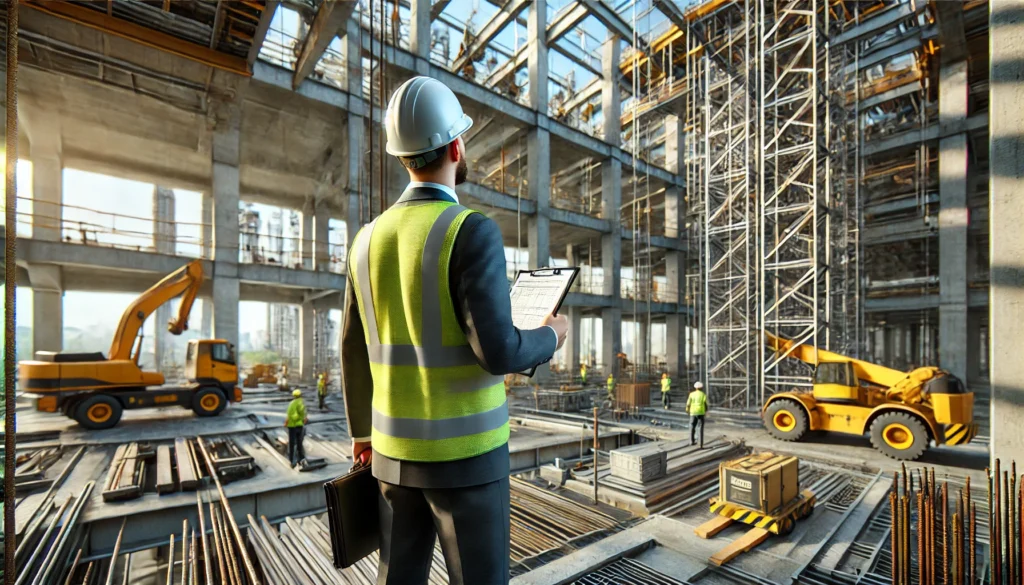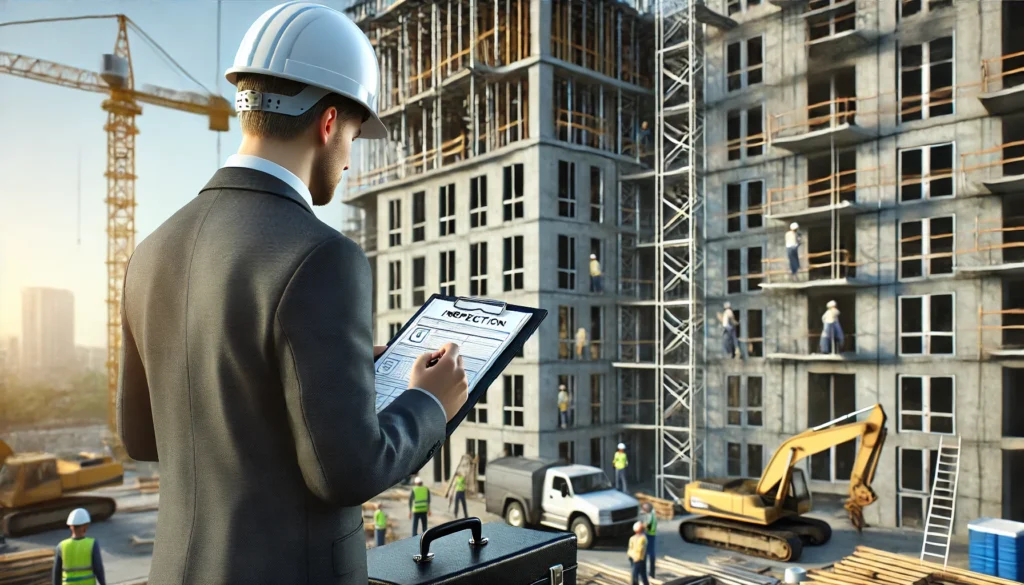The design-build construction method has gained significant popularity for its streamlined approach, offering both design and construction services under a single contract. This collaboration between design-build contractors and clients promises faster project completion, improved communication, and reduced costs. However, despite its advantages, many design-build contractors fail to meet client expectations due to avoidable errors.
In this post, we’ll dive deep into the most common mistakes design-build contractors make, how these mistakes impact projects, and the solutions to avoid them. Whether you’re a contractor or a client looking to hire a design-build construction company, this guide will help you understand the pitfalls and ensure successful project outcomes.
What is Design-Build Construction?
The design-build construction method integrates design and construction services into a unified workflow, meaning the same contractor handles both the design phase and the building phase. Unlike traditional construction methods where the client manages separate contracts with architects, engineers, and builders, design-build provides a single point of responsibility. This method promotes faster communication, reduced costs, and more cohesive project management.
However, even with the best intentions, design-build contractors face significant challenges that can derail projects. Let’s explore the most common reasons they fail.
1. Poor Communication Between Teams
Effective communication is the cornerstone of any design-build construction company. Since design-build involves both the design and construction teams working closely together, poor communication can lead to serious problems, including misunderstandings, scope creep, and delays.
Mistake: Contractors often assume that everyone is on the same page without establishing proper communication channels. This results in missed deadlines, incorrect material orders, and design changes that don’t align with client expectations.
Solution: Set clear, open communication channels from the start. Utilize project management software that allows real-time collaboration between architects, engineers, and construction teams. Regular meetings should be scheduled to ensure alignment on goals, timelines, and budget. Additionally, contractors should maintain transparent communication with clients, keeping them informed of progress and any potential issues early on.
2. Inaccurate Budget Estimation and Cost Overruns
Budget estimation is critical for any design-build project. One of the major benefits of design-build construction is the potential for cost savings, but inaccurate budgeting can quickly lead to financial troubles.
Mistake: Design-build contractors may underestimate the cost of materials, labor, or unforeseen construction challenges, leading to cost overruns and budget blowouts. This often stems from inadequate planning or lack of experience in estimating for both the design and construction phases.
Solution: Early involvement of all stakeholders, including subcontractors and suppliers, can help create a more accurate project estimate. Design-build contractors should also include contingency plans for unexpected expenses. Regular financial audits throughout the project can catch discrepancies before they become significant issues. Furthermore, an integrated design and construction team can work together to propose cost-effective alternatives without sacrificing quality or functionality.
3. Lack of Client Involvement in Key Decisions
The design-build method offers clients greater flexibility and control throughout the project. However, when contractors fail to properly involve the client in decision-making processes, it can lead to dissatisfaction and project failure.
Mistake: Some design-build contractors limit client involvement, assuming that the contractor knows best. As a result, clients may feel disconnected from the project, leading to disappointment when the final product doesn’t align with their vision.
Solution: Engage the client throughout the project lifecycle. This includes obtaining feedback during the design phase and sharing updates during construction. Encourage clients to participate in key decisions, such as material selection and design features. Regular reviews and presentations can help ensure the project aligns with the client’s expectations, fostering trust and transparency.
4. Inadequate Risk Management and Contingency Planning
Risk management is essential for any construction project, but design-build contractors often overlook the importance of planning for potential disruptions.
Mistake: Contractors sometimes assume that once a project is underway, everything will go according to plan. This lack of preparation can lead to project delays, unexpected costs, and even legal disputes.
Solution: A thorough risk assessment should be part of the initial project planning. Design-build construction companies should identify potential risks—such as labor shortages, material delays, or design changes—and develop contingency plans to mitigate these risks. Regular site inspections and progress tracking also allow contractors to adjust timelines and budgets in real-time, minimizing disruption.

5. Neglecting Quality Control in Construction
While speed and cost-effectiveness are significant advantages of the design-build model, quality should never be sacrificed. Neglecting quality control in construction can lead to unsatisfied clients and costly repairs down the line.
Mistake: In an effort to meet tight deadlines, some design-build contractors may rush the construction phase, leading to poor workmanship, overlooked safety protocols, or subpar materials. This undermines the long-term durability and safety of the project.
Solution: Implement a comprehensive quality control process from the outset. Regular inspections should be conducted at every stage of construction to ensure that the work meets both industry standards and client expectations. Design-build contractors should also establish clear quality benchmarks and ensure that both their in-house teams and subcontractors adhere to them. Additionally, third-party inspection services are an essential consideration. These services can provide unbiased assessments of the construction quality, ensuring compliance with safety standards and building regulations. By using a reputable inspection service like Pro Inspect Solution, clients can gain additional confidence that the project will meet the highest quality and safety standards.
6. Failure to Adapt to Changes Mid-Project
In construction, changes are inevitable. Whether it’s an unexpected site condition or a client’s last-minute request, the ability to adapt is crucial for the success of any design-build construction project.
Mistake: Some design-build contractors rigidly adhere to the initial plan, failing to accommodate changes that arise mid-project. This can create frustration for clients and lead to costly delays or rework.
Solution: Flexibility is key. Contractors should incorporate change management strategies that allow for adjustments without derailing the project. Open communication between all parties—including the client—is essential for handling these changes efficiently. Moreover, design-build contractors should create a formal process for evaluating the impact of changes on budget, timeline, and design integrity before proceeding.
Conclusion: A Roadmap to Success for Design-Build Contractors
The design-build construction model offers substantial advantages, but only when executed correctly. By avoiding the common pitfalls of poor communication, inaccurate budgeting, lack of client involvement, inadequate risk management, subpar quality control, and inflexibility, design-build contractors can ensure project success and client satisfaction.
For clients seeking to hire a reliable design-build construction company, it’s essential to choose a contractor with a proven track record of collaboration, transparency, and flexibility. On the contractor’s side, taking proactive steps to prevent these errors can lead to better project outcomes, higher client retention, and a solid reputation in the industry.
Design-Build FAQs
Q1: What is the primary advantage of using design-build over traditional methods?
A1: The main advantage of design-build is its streamlined approach, where design and construction are handled by a single entity. This often leads to faster project completion, improved communication, and reduced costs compared to traditional design-bid-build methods.
Q2: How can a client ensure they choose the right design-build contractor?
A2: Clients should research the contractor’s portfolio, check references, and ensure that the contractor is transparent about communication, budgeting, and timeline management. It’s also important to verify that the contractor has experience with the specific type of project the client is planning.
Q3: What steps can be taken to avoid budget overruns in design-build projects?
A3: Early collaboration between the design-build team and the client is key. Contractors should provide detailed estimates, including contingencies for unexpected expenses. Regular financial audits throughout the project help prevent budget overruns.
Q4: What is the role of the client in the design-build process?
A4: The client plays a critical role in decision-making. They should be involved in all key decisions, including approving the design, material selections, and any changes that occur during construction.


